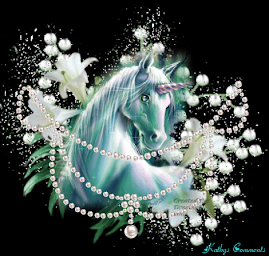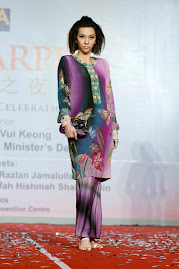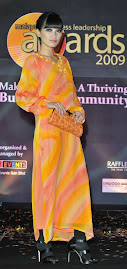BATIK - UNTUK JUALAN DAN TEMPAHAN
INFO TERKINI....!!!
- Jualan Batik secara Borong & Runcit
- Pelbagai corak dan rekaan SONGKET dari harga RM50.00 hingga ribuan ringgit
- Keluaran terbaru - BATIK DIGITAL
- Sedia menerima tempahan uniform dan baju rasmi untuk Jabatan Kerajaan & Swasta
- Pakaian Ready Made
- Rekaan manik-manik yang eksklusif
- Pilihan produk Ready Made :
- KURUNG MODEN
- JUBAH
- PARCO
- SUTERA DESIGN - MONTAJ, FLORA & FAUNA
- Batik Digital ( lukisan tangan )
- Pelbagai corak-corak ABSTRAK yang menarik
BATIK
e_batik4@yahoo.com
Order for long and short sleeve, uniform, traditional malay baju kurung, and any kind of dresses batik design from Kelantan Malaysia.. Please email to us....
e_batik4@yahoo.com
BATIK 1 MALAYSIA
1
2
3
4
5 - SONGKET/ KAIN SEPASANG
6
7
8
9
10 - BAJU KEMEJA
11
12
13

14
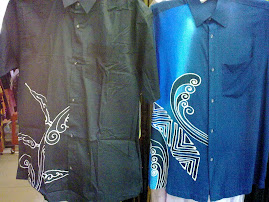
GELANG MUTIARA
SILA EMAIL KEPADA KAMI....
e_batik4@yahoo.com
Want to order pearl bacelet or necklace?
please email to...
e_batik4@yahoo.com
(A) (1) GELANG MUTIARA
GELANG MUTIARA SABAH HITAM AIR TAWAR BERKATUP
KOD 001A
RM 402)
GELANG MUTIARA SABAH PUTIH AIR TAWAR BERKATUP
KOD 001B
RM 40
3)
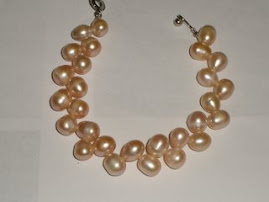
GELANG MUTIARA PADI
KOD 002A
RM 204)
GELANG MUTIARA GRED ASLI POTATOB
KOD 003A
RM 20
5)
GELANG MUTIARA 3 LINE
KOD 004A
RM 30
6)
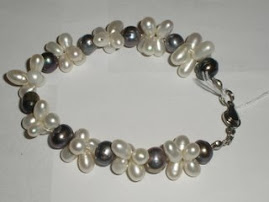
GELANG MUTIARA SABAH BERBUNGA
KOD 005A
RM 42
7)
GELANG ULAT BULU + MUTIARA (AIR MASIN) POTATO HALUS
KOD 006A
RM 28
8)
GELANG MUTIARA JAGUNG GRED C
KOD 007A
RM 20
9)
GELANG MUTIARA SABAH BERSALUT
KOD 007A
RM 27(B) (1) GELANG MUTIARA + KRISTAL
GELANG MUTIARA SABAH + KRISTAL BERKATUP
KOD 001MK
RM 232)
GELANG MUTIARA SABAH 1 LINE
KOD 002MK
RM 22
3)
GELANG KRISTAL + MUTIARA BERKATUP
KOD 003MK
RM 30
4)
GELANG KRISTAL MUTIARA PADI
KOD 004MK
RM 30
5)
GELANG MUTIARA HALUS/KRISTAL BERBUNGA
KOD 005MK
6)
GELANG RAMA-RAMA MUTIARA
KOD 006MK
RM 25
7)
GELANG KRISTAL + MUTIARA PADI LONJONG
KOD 007MK
RM 30
8)
GELANG CAT EYES MUTIARA
KOD 008MK
RM 35(C) (1) SENARAI PEMBELIAN SET RANTAI MUTIARA
RANTAI MUTIARA POTATO TIGER EYES, GELANG KRISTAL TIGER EYES,
CINCIN + KERONGSANG TIGER EYES
KOD 001STM
RM 150
2)
RANTAI MUTIARA SABAH + GELANG MUTIARA SABAH LOKET LOVE
KOD 002STM
RM 100
3)
RANTAI LABUH MUTIARA ASLI (PANJANG 80CM) + GELANG MUTIARA ASLI
KOD 003STM
RM 75
4)
RANTAI LENGKAP POTATO (RANTAI, GELANG, KERONGSANG DAN CINCIN)
KOD 004STM
RM 150
5)
RANTAI MUTIARA PATATO BUNGA TANJUNG + GELANG 1 LINE
KOD 005STM
RM 90
6)
RANTAI MUTIARA POTATO BUNGA TANJUNG + GELANG 2 LINE
KOD 006STM
RM 100
Thursday, January 7, 2010
About Batik Designs
Although there are thousands of different batik designs, particular designs have traditionally been associated with traditional festivals and specific religious ceremonies. Previously, it was thought that certain cloth had mystical powers to ward off ill fortune, while other pieces could bring good luck.
Certain batik designs are reserved for brides and bridegrooms as well as their families. Other designs are reserved for the Sultan and his family or their attendants. A person's rank could be determined by the pattern of the batik he/she wore.
In general, there are two categories of batik design: geometric motifs (which tend to be the earlier designs) and free form designs, which are based on stylized patterns of natural forms or imitations of a woven texture. Nitik is the most famous design illustrating this effect.
Certain areas are known for a predominance of certain designs. Central Javanese designs are influenced by traditional patterns and colors. Batik from the north coast of Java, near Pekalongan and Cirebon, have been greatly influenced by Chinese culture and effect brighter colors and more intricate flower and cloud designs.
High fashion designs drawn on silk are very popular with wealthy Indonesians. These exceptionally high-quality pieces can take months to create and costs hundreds of dollars.
Kawung
Kawung is another very old design consisting of intersecting circles, known in Java since at least the thirteenth century. This design has appeared carved into the walls of many temples throughout Java such as Prambanan near Jogjakarta and Kediri in East Java. For many years, this pattern was reserved for the royal court of the Sultan of Jogjakarta. The circles are sometimes embellished inside with two or more small crosses or other ornaments such as intersecting lines or dots. It has been suggested that the ovals might represent flora such as the fruit of the kapok (silk cotton) tree or the aren (sugar palm).
Ceplok
Ceplok is a general name for a whole series of geometric designs based on squares, rhombs, circles, stars, etc. Although fundamentally geometric, ceplok can also represent abstractions and stylization of flowers, buds, seeds and even animals. Variations in color intensity can create illusions of depth and the overall effect is not unlike medallion patterns seen on Turkish tribal rugs. The Indonesian population is largely Muslim, a religion that forbids the portrayal of animal and human forms in a realistic manner. To get around this prohibition, the batik worker does not attempt to express this matter in a realistic form. A single element of the form is chosen and then that element is repeated again and again in the pattern.
Parang
Parang was once used exclusively by the royal courts of Central Java. It has several suggested meanings such as 'rugged rock', 'knife pattern' or 'broken blade'. The Parang design consists of slanting rows of thick knife-like segments running in parallel diagonal bands. Parang usually alternated with narrower bands in a darker contrasting color. These darker bands contain another design element, a line of lozenge-shaped motifs call mlinjon. There are many variations of this basic striped pattern with its elegant sweeping lines, with over forty parang designs recorded. The most famous is the 'Parang Rusak' which in its most classical form consisting of rows of softly folded parang. This motif also appears in media other than batik, including woodcarving and as ornamentation on gamelan musical instruments.
Washing Batik
Harsh chemical detergents, dryers and drying of fabrics in the sun may fade the colors in batik. Traditionally dyed batiks should be washed in soap for sensitive fabrics, such as Woolite, Silky or Halus. Fine batik in Indonesia is washed with the lerak fruit which can be purchased at most traditional markets. A bottled version of this detergent is also available at batik stores. Be sure to line dry batik in a shady area and not in direct sunlight.
Modern Batik
Modern batik, although having strong ties to traditional batik, utilizes linear treatment of leaves, flowers and birds. These batiks tend to be more dependent on the dictates of the designer rather than the stiff guidelines that have guided traditional craftsmen. This is also apparent in the use of color that modern designers use. Artisans are no longer dependent on traditional (natural) dyes, as chemical dyes can produce any color that they wish to achieve. Modern batik still utilizes canting and cap to create intricate designs.
Fashion designers such as Iwan Tirta have aggressively introduced batik into the world fashion scene. They have done much to promote the Indonesian art of batik dress, in its traditional and modern forms.
The horizon of batik is continuing to widen. While the design process has remained basically the same over the last century, the process shows great progress in recent decades. Traditionally, batik was sold in 2 1/4 meter lengths used for kain panjang or sarong in traditional dress. Now, not only is batik used as a material to clothe the human body, its uses also include furnishing fabrics, heavy canvas wall hangings, tablecloths and household accessories. Batik techniques are used by famous artists to create batik paintings which grace many homes and offices.
Fine quality handmade batik is very expensive and the production of such works is very limited. However, in a world that is dominated by machines there is an increasing interest in materials that have been handmade. Batik is one of these materials.
During your stay in Indonesia, take advantage of your time here to learn more about the fascinating world of batik. Have a batik dress or men's business shirt made for you by a seamstress or tailor. Visit batik factories in Jogjakarta, Surakarta or Pekalongan to see for yourself how the intricate process is conducted or ask questions of batik artisans giving demonstrations in stores such as Sarinah or Pasaraya in Jakarta. You will come away with sense of wonder over the time, effort and patience put into the creation of each batik cloth. You too may soon grow to love the distinctive waxy smell of batik and your batik acquisitions will provide many memories of your stay in Indonesia. Your support of the batik industry will also ensure that this art form grows to even greater peaks.
What is Batik?
To make a batik, selected areas of the cloth are blocked out by brushing or drawing hot wax over them, and the cloth is then dyed. The parts covered in wax resist the dye and remain the original colour. This process of waxing and dyeing can be repeated to create more elaborate and colourful designs. After the final dyeing the wax is removed and the cloth is ready for wearing or showing.
Contemporary batik, while owing much to the past, is markedly different from the more traditional and formal styles. For example, the artist may use etching, discharge dyeing, stencils, different tools for waxing and dyeing, wax recipes with different resist values and work with silk, cotton, wool, leather, paper or even wood and ceramics.
Batik is historically the most expressive and subtle of the resist methods. The ever widening range of techniques available offers the artist the opportunity to explore a unique process in a flexible and exciting way.
History of Batik
No evidence of very old cotton batiks have been found in India but frescoes in the Ajunta caves depict head wraps and garments which could well have been batiks. In Java and Bali temple ruins contain figures whose garments are patterned in a manner suggestive of batik. By 1677 there is evidence of a considerable export trade, mostly on silk from China to Java, Sumatra, Persia and Hindustan. In Egypt linen and occasionally woollen fabrics have been excavated bearing white patterns on a blue ground and are the oldest known and date from the 5th century A.D. They were made in Egypt, possibly Syria. In central Africa resist dyeing using cassava and rice paste has existed for centuries in the Yoruba tribe of Southern Nigeria and Senegal.
Indonesia, most particularly the island of Java, is the area where batik has reached the greatest peak of accomplishment. The Dutch brought Indonesian craftsmen to teach the craft to Dutch warders in several factories in Holland from 1835. The Swiss produced imitation batik in the early 1940s. A wax block form of printing was developed in Java using a cap.
By the early 1900s the Germans had developed mass production of batiks. There are many examples of this form of batik as well as hand-produced work in many parts of the world today. Computerisation of batik techniques is a very recent development.
Batik in history
The definitive history of batik is obscure but batik artifact of 2000 years had been found [ see www.story-of-batik.com]. Wherever its origin, it is a heritage art of the human civilisation.
Batik in recent time
Use of batik in recent time was given impetus with it being accorded national status - worn by dignitaries for official and state function. Often visit to batik factories were made part and parcel of state visit and wearing of batik at state reception by foreign dignitaries symbolize closeness of relationship between nations.
Development in batik design
Batik design has evolved from the original version of prints (batik terap) to assimilate influences of popular art particularly Indonesian's Batik Jawa design. In hand-drawn batik, the tjanting method earlier used by Indonesian found its way into Malaysia coupled with introduction of dye suitable for silk printing lead to a boom in batik design industry in mid 90s. Batik Terengganu, particularly the block print has a unique position in batik tradition even if it is said to be influenced by Javanese style. As far as I can remember, local manufacturers persisted on its technique and design uniqueness though faced with imports of Indonesian blocks.
Challenge in the industry
Development of batik is dependent on various factors ranging from design, materials and craftsman to popular trends. The boom of late 90s has considerably waned due to over supply and the lack of quality control. Copycats were the order of the day. The industry's dependency on imported textiles and dyes prove to be its Achilles heel. Without a government trade protection policy, the high cost of raw material imports, the local producers over-competition and changing taste to imported prints, batik now appear to head to its twilight.
The batik future
Batik survival and evolution through the ages is a factor that will ensure it longevity. The art shall survive the industry and with the cyclical fashion trends, it may be popular again. What it takes is new ideas and approach.
Batik dalam sejarah
Pemakaian batik dalam busana tradisi mempunyai sejarah yang lama berlangsung dari zaman awal tamadun Melayu. Dipakai oleh semua golongan, dari raja ke bangsawan sampai ke rakyat jelata, batik menzahirkan dirinya sebagai seni asli yang praktikal dan popular. Dalam tradisi penulisan tradisi, kain cindai misalnya disebut dalam banyak hikayat-hikayat silam. Batik menjadi hadiah perpisahan dan perlambangan cinta dalam Hikayat Malim Deman dan persalinan dijadikan tanda penganugerahan darjat dalam Hikayat Hang Tuah. Dalam seni wayang yang lebih terkemudian; dalam filem Sumpah Orang Minyak (P. Ramli 1968) batik dijadikan lambang pernyataan cinta yang terlarang. Dan siapa yang boleh melupakan Ramona berkemban dengan batik lepas bermandi bunga dalam Fenomena (M.Nasir 1996).
- Teknik, bahan dan peralatan seni batik
Batik techniques, material and utensils
- Busana dan corak dari zaman ke zaman
Couture and patterns through the ages
- Seni Canting [dari lakaran ke busana]
Tjanting Art (from sketch to couture)
- Batik Terap [dari keping-keping logam ke busana]
Batik Prints (from metal scraps to couture)
Perkembangan dalam seni batik
Corak batik melalui evolusi dari corak terap yang asal dengan asimilasi pengaruh seni batik Indonesia dan luar. Batik tulis berdasarkan kaedah canting dipengaruhi oleh Indonesia dan bersama-sama dengan kemunculan pewarna baru yang susuai untuk sutera membawa kepada ledakan seni batik tulis di pertengahan 90an. Batik Terengganu khususnya batik terap mempunyai kedudukan yang unik walaupun dikatakan dipengaruhi oleh seni batik Jawa. Namun begitu, seingat saya, batik Terengganu dan batik Jawa berbeza; malah sehingga kinipun pengeluar batik tradisional masih mempertahankan teknik dan corak Terengganu walaupun ada beberapa pengeluar atas alasan kos menggunakan blok yang dibawa dari Indonesia.
Cabaran dalam industri
Perkembangan batik bergantung kepada beberapa faktor dari reka bentuk, bahan, artisan hinggalah kepada trend citarasa semasa. Ledakan 90an telah surut mendadak akibat lebihan bekalan dan ketiadaan kawalan mutu. Peniru melambak di pasaran. Pergantungan industri kepada tekstil dan pewarna yang diimpot juga menjadikan industri ini kurang daya tahannya. Tanpa perlindungan kerajaan, kos bahan mentah yang tinggi, saingan yang melampau dan perubahan citarasa kepada tekstil impot menjuruskan industri ini ke senja.
Masa depan batik
Ketahanannya merentas masa adalah faktor yang akan meneruskan sejarah batik. Seninya akan hidup melewati usia industri dan peredaran dunia fesyen akan membawa batik popular kembali. Demikian, keperluan kepada idea dan kaedah baru amatlah dirasai.
Proses Pembuatan Batik
Kain putih yang akan dibatik dapat diberi warna dasar sesuai selera kita atau tetap berwarna putih sebelum kemudian di beri malam. Proses pemberian malam ini dapat menggunakan proses batik tulis dengan canting tangan atau dengan proses cap. Pada bagian kain yang diberi malam maka proses pewarnaan pada batik tidak dapat masuk karena tertutup oleh malam (wax resist). Setelah diberi malam, batik dicelup dengan warna. Proses pewarnaan ini dapat dilakukan beberapa kali sesuai keinginan, berapa warna yang diinginkan.
Jika proses pewarnaan dan pemberian malam selesai maka malam dilunturkan dengan proses pemanasan. Batik yang telah jadi direbus hingga malam menjadi leleh dan terlepas dari air. Proses perebusan ini dilakukan dua kali, yang terakhir dengan larutan soda ash untuk mematikan warna yang menempel pada batik, dan menghindari kelunturan. Setelah perebusan selesai, batik direndam air dingin dan dijemur.
Friday, December 25, 2009
Batik Malaysia – Forging Ahead Remains the Only Solution
Writers: Raja Fuziah & Wairah Marzuki

7th issue Icon: Tun Dr. Mahathir Bin Muhammad, Malaysian Former Prime Minister
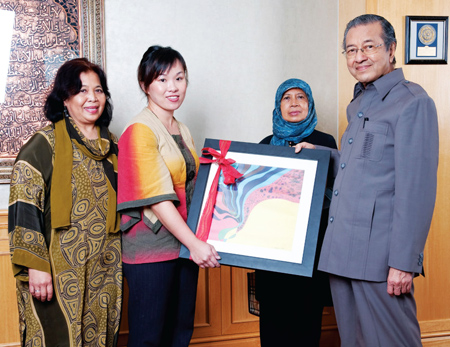
Emilia Tan present the token appreciation to Tun, witnessed by Wairah Marzuki (right) & Raja Fuziah (left)
myBatik was privileged to meet with former Prime Minister of Malaysia, Tun Mahathir Bin Mohamad in June 2009 where we had a delightful discussion on the subject The Unique Batik Malaysia.
We are proud therefore to share with our readers Tun Mahathir’s insight on the subject and his advocacy of the task ahead. This article reflects on the issues discussed with Tun Mahathir and we record herewith our impressions:
The Unique Batik Malaysia
Developing batik as handcrafted textile – hand-printed and hand-drawn, has made us all acutely aware of the importance of three essential elements in producing a new product. They are, namely, Design, Colour and Technique.
We need to pay attention to all of the three above elements giving emphasis to Design which requires the most and urgent attention.
Secondly, Malaysians love bright colours and batik in bright colours has become a manifestation of that expression. However, we need to think of the market and the consumers we are targeting. Therefore, we need to study how they perceive colours and their receptivity to our selection of colours.
And thirdly, the need to take an aggressive approach in R&D and to engage in experimenting new technologies that can expedite and enhance batik production process as well as to solve problems related to attaining quality production. Learning from the experiences of other countries such as Japan and Korea, and adapting their practices to meet our needs would indeed be a real asset. Another aspect of R&D, relates to acquiring knowledge about the characteristics of fabrics in order to appraise their appropriateness for making batik.
What makes Batik Malaysia unique is that we have been able to develop it through innovation by observing and learning from the tradition of batik–making of other countries, and successfully creating our own indigenous batik–style.
We must therefore continue to challenge ourselves to develop the product further and aim for excellence.
From Batik Sarong to Batik Yardage
In the last 50 years, batik has gone through an evolutionary process. Originally, the traditional batik cloth is the batik sarong, a functional cotton wrap to cover the body worn mainly by women and some men at home and at work.
Its transformation from a two meter patterned cloth to batik yardage (1960s) indeed had posed a serious challenge which demanded and involved extensive support in design and product development.
The task and challenge to innovate batik design has continued until the present day where the business of batik-making has reached the level of a highly competitive industry with producers ranging from that of a single-operator batik entrepreneur to that of an atelier/factory type of production vying for the discerning consumer.
Trends in Fashion
The world of fashion has created an immense consciousness with the designers and batik – makers who recognise the need to constantly innovate and produce new designs, introduce new range of colours as well as to experiment with new production techniques to meet with the fast changing consumer taste and fashion trends. As a result, batik crafted from a variety of materials such as silk, cotton and linen of varying texture have emerged in the market – place.
Batik as an Art form
Malaysian artists have made an inroad with their innovative adaptation of the batik technique on canvas. Henceforth, a new genre of batik as an art form was born. Batik paintings depicting images of Malaysian flora, fauna, forest, food and fiesta themes are providing a glimpse into the rich diversity of natural and cultural heritage of Malaysia through Batik Art.
The Design Challenge
A good design should create a pleasant virtual experience: the customer should perceive the product as aesthetically pleasing.
In this respect, batik designers should develop batik design to respond to the particular needs of the consumers thereby promoting the concept of special design for specific usage, such as batik for school wear, batik for uniform, batik for daily wear, batik for formal day and evening attire and batik for special occasions. Each particular design with special motif, pattern, colour and fabric created would therefore give batik that exclusive look and this would impact on batik not only as a versatile textile for clothing but also in popularizing it to a wider market.
Malaysia’s natural environment offers limitless source of inspiration from which new ideas, patterns, motifs and colours could be derived. At the same time, the uniqueness of each community in Malaysia, the people and their living traditions and cultural heritage are yet another source for design input.
Towards A Design Solution
Batik has to be taken seriously if it were to achieve the status of brand excellence.
Towards this end, designers, batik-makers and all concerned would have to work together in meeting the quality standard specified. Whether batik is for the domestic market or for export, criteria such as finishing, presentation and packaging are important in determining the quality of the product.
One positive way would be for the local institutions who are already working in the development and promotion of batik to jointly cooperate and collaborate in their R&D efforts. Hence, to consider the idea of establishing a Batik Design Laboratory aimed at making a strategic thrust forward in research and product development envisaged for batik. This could be either as a programme or project. The lab should steer the direction and harness the best of all human, professional and technical resources made available to it by the collaborating institutions.
This institutional framework should act as the tool responsible in realizing the agenda to develop further the unique identity of Batik Malaysia.






